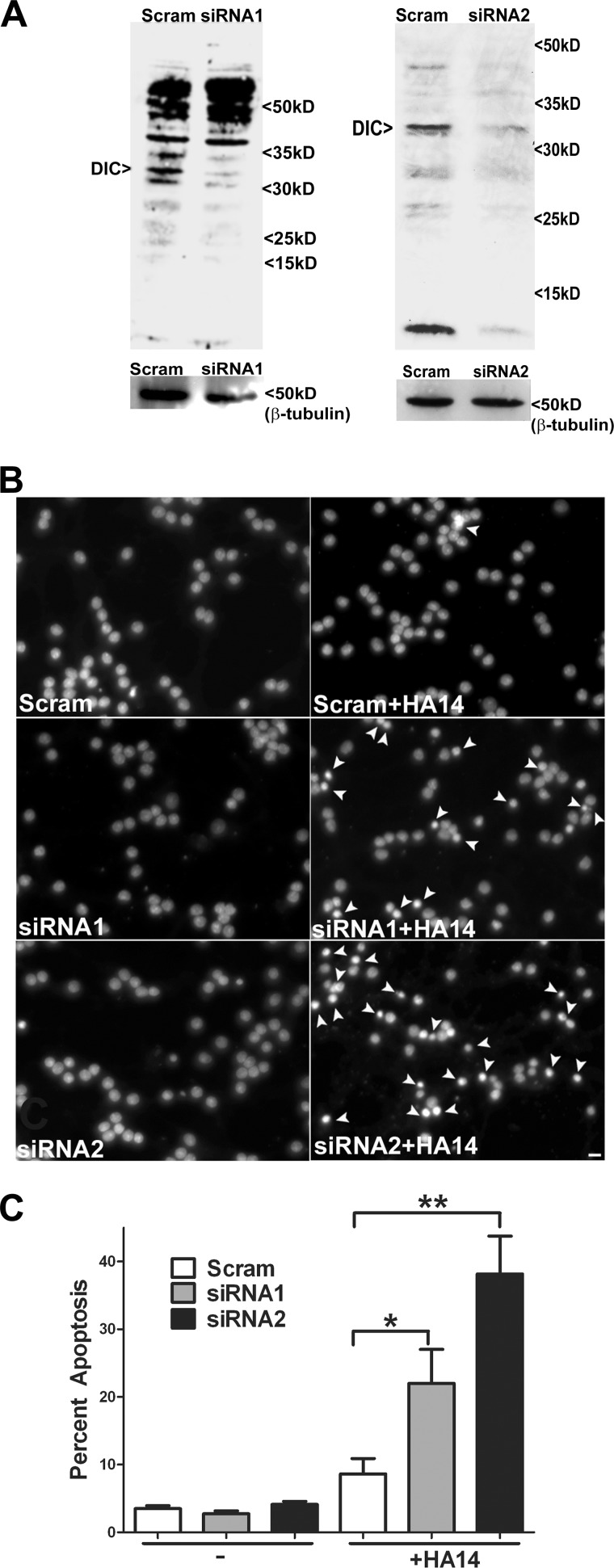FIGURE 9.
Adenoviral siRNA-mediated knockdown of DIC renders CGNs more susceptible to oxidative stress. A, CGNs were infected for 48 h with a scrambled (Scram) or two distinct DIC-specific siRNA (siRNA1 or siRNA2) adenoviruses. Cells were lysed; proteins were resolved by SDS-PAGE and immunoblotted for DIC (upper blots) and β-tubulin (lower blots). B, CGNs were infected as described in A, after which cells were then either left untreated (Scram, siRNA1, or siRNA2) or treated with 12.5 μm HA14-1 (Scram + HA14, siRNA1 + HA14, or siRNA2 + HA14) for 4 h. Cells were fixed, and nuclei were stained with Hoechst. The panels show representative fields of decolorized nuclei. Arrowheads indicate apoptotic nuclei. Scale bar, 10 μm. C, cells were infected/treated as in B, and apoptosis was quantified as the percentage of cells with condensed and/or fragmented nuclei. *, p < 0.05 versus scrambled + HA14; **, p < 0.01 versus scrambled + HA14; n = 3 experiments with each treatment performed in triplicate. Error bars, S.E.

